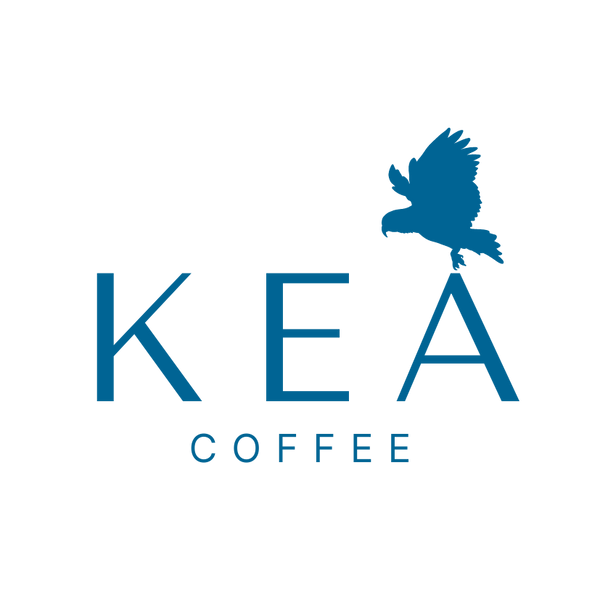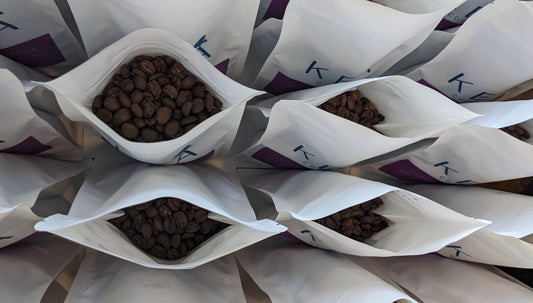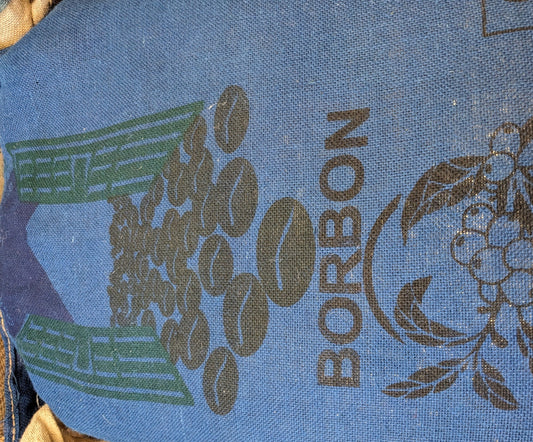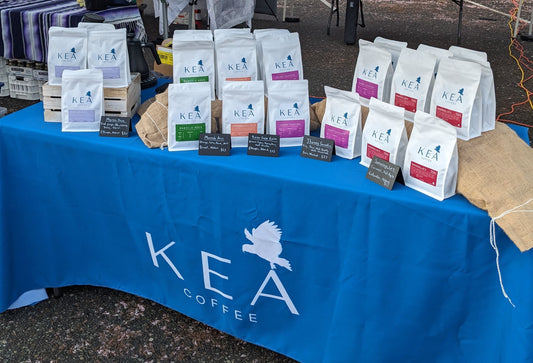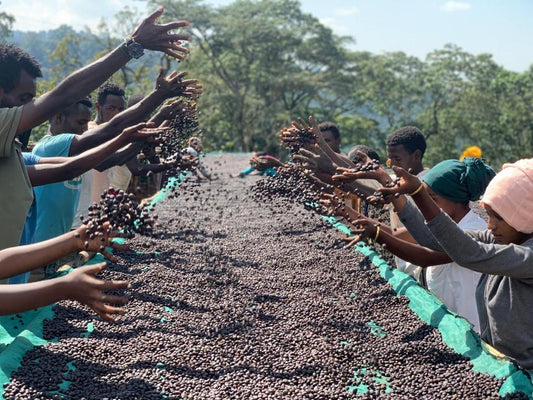Decaf coffee has made some huge strides forward in the last couple of years.
Looking for a specialty decaf used to be a bit like trying to decide which piece of carrot you want to eat out of a pile of vomit. It's probably going to be a bad time no matter what you do.
But this is increasingly not the case any more.
Producers and roasters alike are taking specialty level decaf much more seriously, and the industry is waking up to the fact that decaf might not have to be rubbish after all.
New decaffeination techniques and roast profiles are being used to help decaf beans retain way more of the origin characteristics that we all want to enjoy in a great cup of coffee.
Earlier this year, Weihong Zhang even used a decaf coffee to win (yes, WIN) the 2024 US Brewers Cup!
Specialty decaf really has come a long way.
So today, we thought it might be fun to take a closer look at some of the efforts that are being made across the whole supply chain, to push decaf forward.
Better Decaf Methods
There's a handful of different processes that coffees are usually put through post harvest in order to extract the caffeine and make them decaf.
Swiss Water Processing remains the most popular decaf method today.
But other methods like the Carbon Dioxide Method (a.k.a. Supercritical CO2 Method), Sugarcane (ethyl acetate) Method are gaining popularity too.
Swiss Water in particular has improved a lot over the years.
While it used to be true that these processing methods would strip out a lot of the good flavour compounds of the coffee beans along with the decaf, processing techniques have continued to stack improvements.
From more targeted extraction techniques, to the lot traceability that's so important for specialty coffee, decaffeination methods and processes are making big progress.
New Super Low Caffeine Coffee Varietals
Another really exciting area for decaf development, has been in the discovery of new extremely low caffeine varietals.
Laurina varietal (a mutation from Bourbon) is maybe the most well known of these to emerge in recent years, and it contains only 0.2% - 0.3% caffeine.
There's also Aramosa - a hybrid between Arabica and Racemosa that has similarly very low levels of caffeine.
According to Ralf Rüller: "Laurina usually has 0.2 to 0.3% caffeine, [while] regular arabica has 1.4 to 1.8%,” Ralf explains. “Aramosa probably has around 0.7 to 0.8%, so we usually say the locaf varieties have less than 50% of regular arabica."
These newer, super low caffeine varietals aren't decaf. But they're much closer to it and come without the need for any additional decaffeination process which can chip away at their origin characteristics.
Roasting Innovations For Decaf Coffees
Coffee roasting as a craft is still relatively young.
We've come a long way in recent years, but there's still lots that, at best, we only partially understand.
Decaf beans in particular, add some additional difficulties into the mix.
In order to extract the caffeine from the coffee beans, you have to open up their cell structures so that the caffeine can escape.
That's inherent in every decaffeination method, regardless of which one you apply.
The problem is, when you do that, you also change the way that those beans will react to heat during the roasting process.
Weakening the cells mean the beans will take on heat faster.
If you apply the same roast profiles to them that you might with a typical coffee, they'll end up much darker than you were aiming for and you'll get a lot of roasting defects like charring, tipping and scorching.
Traditionally in decaf roasts, roasters have covered these defects up by just roasting darker.
But with a darker, albeit more uniform roast, you do start to roast away a lot of those origin characteristics.
As specialty coffee roasters, we're constantly striving to help preserve and showcase as many of those great origin characteristics in our coffees as possible.
And third wave roasters continue to learn more and more about decaf beans, developing better and better roast profiles.
Many roasters are now pushing the boundaries with lighter and lighter roasted decafs.
Roasters are also taking higher quality beans through decaffeination.
Like the time when Colo Torode took a high price Columbian Gesha through Swiss Water processing and used it to compete in the Canadian National Barista Championships.
Growing demand for specialty decaf coffee
At the root of all these innovations, is a boom in popularity for high quality specialty decaf.
The worldwide market for decaf as a whole was valued at $20 billion in 2023, and forecast to grow to $39 billion within the next 10 years.
And specialty decaf is taking bigger and bigger slices of that market, as younger age groups also now start to discover specialty.
In fact, according to a 2017 study by the NCA, 18-24 year olds were the largest consumer group for decaf coffee in the United States.
And if you're drinking decaf, you're drinking it purely because you love coffee.
You're not in it for the caffeine.
So naturally, the push for higher and higher quality, specialty decaf coffee options continues to grow.
